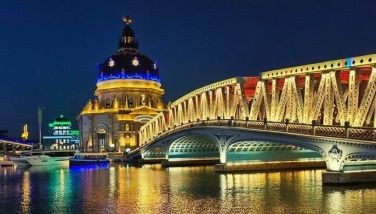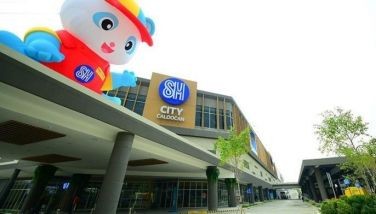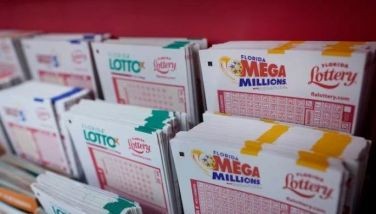Exploring Normandy

January 26, 2003 | 12:00am
 When people mention France, its capital city, Paris, comes to mind. To prove that there is more beyond Paris, my pal Reesa Tesoro Guerrero and I left the "City of Lights" to unravel the other jewels of France. Sure enough, we discovered the charm and glamour of Normandy just two hours away.
When people mention France, its capital city, Paris, comes to mind. To prove that there is more beyond Paris, my pal Reesa Tesoro Guerrero and I left the "City of Lights" to unravel the other jewels of France. Sure enough, we discovered the charm and glamour of Normandy just two hours away.
Normandy (or Normandie as the French spell it) is the coastal region northwest of Paris. The region is dotted with rugged seascapes, sophisticated resorts, and pristine beaches. The sights and sounds, culture and history of Normandy are something to reckon with. So are the monuments of medieval towns, picturesque ports and serene canals, solid chateau and magnificent cathedrals. There were gastronomic delights too, wherever we went.
As we drove through scenic Normandy from Paris we gazed at verdant pastoral landscapes where cows graze on lush pastures interconnecting the dense timberland. With this poetry in motion arresting our senses, it is no wonder French impressionist Claude Monet, among other painters, drew most of his inspiration from here. For us, falling in love with Normandy was inevitable after touring medieval Rouen, serene Lisieux, romantic Honfleur, seaside Deauville and impressive Trouville which were the highlights of this enchanting sojourn.
Rouen rose from the ashes of war and was subsequently rebuilt. Prior to its massive reconstruction, Rouen had an influx of industries spawned by its busy port, now the fifth largest in France. Cobblestone streets lined with ancient Norman buildings – like rue d’ Amiette, a pedestrian-only street harboring restaurants and small shops – fan out from place St-Maclou, an attractive square surrounded by picturesque half-timber houses. Rouen gained celebrity when Joan of Arc was burned at the stake here in 1431. Rouen is known as the City of Hundred Spires for it has many churches like the Cathedrale Notre Dame that stands majestically beside medieval buildings. If you are familiar with the works of Monet, you will recognize the cathedral’s immense west facade, rendered exquisitely in his series Cathédrales de Rouen.
A most touching experience was the visit to Lisieux where my favorite saint, St. Therese of Lisieux, was born. When my good friend Menchie Gregorio enthused how she would take the train from Prague for her soul-searching retreats here, I vowed to visit this pilgrimage site. I could hardly believe that I was at the Les Buisonnets, the house where St. Therese lived with her family until 1888 when she entered the Carmelite Convent. Reesa and I later learned that St. Therese (1873-1897) who came to Lisieux as a child, entered the convent at 15, and spent the last 10 years of her life as a Carmelite nun. Therese was canonized in 1925, and in 1954 the Basilique Saint Thérése was built in her honor. Pope Saint Pius X has called her "the greatest Saint of modern times." In this visitor-friendly city, the townspeople will ensure you get to where you’re going and they will make sure that you find out all you want to know about St. Therese.
Lisieux is the main market town of the prosperous Pays d’ Auge, an agricultural region famous for cheeses named after such towns as Camembert, Pont l’ Eveque, and Livarot. It is also a land of apple orchards, used for the finest calvados. You must sample their apple brandy. Calvados is to the Normans as lambanog (fermented coconut wine) is to the Filipinos.
The place to go, when one is craving for succulent seafood, is Honfleur, which is two hours drive from Lisieux. The colorful port of Honfleur on the Seine estuary has become increasingly popular. The town, full Normandy-style houses and cobbled streets, was once an important departure point for maritime expeditions dating as far back as the 15th century. The 17th-century harbor is fronted on one side by two-story stone houses with low, sloping roofs and on the other by tall, narrow houses with wooden façades and slate roofs. Stroll around the old harbor and pay a visit to the wooden church of Ste-Catherine, which dominates the harbor’s northern corner. The townspeople built this to show their gratitude for the departure of the English at the end of the Hundred Years War. In 1608, Samuel de Champlain set sail from here and founded Quebec (Canada). In 1681, Cavelier de la Salle set to explore what is now the USA and claimed Louisiana, naming it after King Louis XIV. Born in Honfleur, artist Eugene Boudin (1824-1898) and composer Erik Satie (1866-1925) are honored by museums here.
We proceeded to the dramatic cliffs of Etretat, 45 minutes away where the promenade running the length of the town’s pebbled beach now has many quaint cafes where one can view the awesome rock formations that extend out into the sea. The Falaises d’ Etretat are white cliffs that are as famous in France as Dover’s are in England. During low tide, it is possible to walk through the huge archways formed by the rocks to neighboring beaches. For a breathtaking view of the whole bay, take the path up to the largest arch Falaise d’ Aval, from which you can hike for miles across the Manneporte hills or play a round of golf on one of Europe’s windiest and most scenic courses. Farther south is the appropriately named Aiguille (Needle), a 300-foot spire of rock jutting into the air just off the coast.
Truly magical were the towns of Deauville-Trouville which looked like scenes from tinseltown. These twin resort towns are separated by the estuary of the River Touques and joined by a bridge. Deauville is a chic watering hole that features a race course, casino, marina, regattas, palaces and gardens. The Promenade des Planches – the boardwalk extending along the seafront and lined with deck chairs, bars and striped cabanas – is the place for celebrity watching. With elegant hotels, designer boutiques and gilt-edge casinos, Deauville’s fashionable image attracts visitors throughout the year. Although Trouville is now considered an overflow town for its more prestigious neighbor, it became one of France’s first seaside resorts when Parisians began flocking here in the mid-19th century. In contrast to Deauville, Trouville is more of a family resort. If you prefer a typical French holiday spot stay in Trouville which has a casino and boardwalk, a bustling fishing port, and a native population that makes it a livelier place than Deauville.
Exploring Normandy was like walking into fairytale land where everything is picture-perfect. We even had to pinch ourselves to know we weren’t dreaming!
Next time you’re in Paris, treat your senses and discover Normandy.
BrandSpace Articles
<
>



















